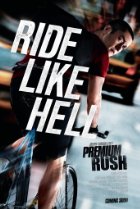Dan Culberson
Dan Culberson is an author, TV performer, editor and publisher who has been writing about culture, politics and religion since 1994. He was graduated Phi Beta Kappa with a B.A. in English literature in the Honors Program from the University of Colorado and was president of the Pi Kappa Alpha fraternity. He was born in Carmel, CA, but grew up all over the U.S. and Europe, living in Monterey, CA: Medford, OR; Lawton, OK (twice); Pampa, TX; Minot, ND; El Paso, TX; Tacoma, WA; Kennewick, WA; Erlangen, Germany; Lebanon, MO; Colorado Springs, CO (where he attended high school); Boulder, CO (where he attended college and now lives); and Heidelberg while serving in the U.S. Army and Sindelfingen, Germany while on assignment for IBM. He served three years in the U.S. Army, retired from IBM after 25 years with a career in publications and is a writer, editor and publisher who came of age in the Sixties, which he remembers quite well. He was named a Boulder Pacesetter in 1985 by the BOULDER DAILY CAMERA in the first year of that program and was a film reviewer from 1972 to 2014 for newspapers, magazines, radio stations and TV programs.
Homepage: http://c1n.tv
Posts by Dan Culberson

“End of Watch” a Buddy-Cop Movie with a Twist
Sep 29th
“Buddy-Cop Movie With a Twist”
“Hotshots” looks at a movie!
End of Watch is a powerful, almost traditional buddy-cop movie, but the language is raw, the action is violent, and it has an ending with an unexpected twist to it.
Jake Gyllenhaal and Michael Pena play officers Brian Taylor and Mike Zavala, who work in the Los Angeles Police Department as partners ane whose area that they patrol is the rough arena of South Central Los Angeles, which Taylor says has three major food groups: drugs, money, and guns.
When the movie opens, it is the first day back on the job for Taylor and Zavala after they were cleared by an investigation into a shooting they were involved in, and once they are out in their patrol car, Zavala says, “Dude, it’s good to be back, Man.”
Taylor has a recording device in his uniform for a class project he is working on, and so a lot of the footage we see is from the point of view of that device, which is called “found footage” these days, but don’t worry. The whole movie isn’t from that POV, but enough is so that at times the movie gets confusing.
So, we watch and listen to the good-natured banter between these two friends as they drive around the city between calls, we learn about their personal lives as they talk and even see some aspects of them at various points in the movie, and we witness many of the calls they go on and see just how rough and dangerous being a policeman in today’s Los Angeles can be, both for them and other police officers who are called in to help.
In addition to the commonplace calls that Taylor and Zavala make, the main story point is a turf war between two rival gangs, one composed of black people and the other composed of Latinos, who have connections with drug cartels operating out of Mexico and who are also involved with the trafficking of illegals being brought up from Mexico and kept in terrifying and dangerous conditions.
In fact, Taylor and Zavala stumble into the ramifications of the main story more than anything else, and once again we see how in movies situations can go from bad to the worst you can imagine.
End of Watch is terrific and get ready for the twist at the end.
I’m Dan Culberson and this is “Hotshots.

“Premium Rush” Is Breakneck Fun
Sep 24th
“Breakneck Fun”
“Hotshots” looks at a movie!
Premium Rush is the ultimate chase movie through the streets of New York City centered around a story about Manhattan bicycle messengers.
Joseph Gordon-Levitt plays Wilee, an obvious reference to Wile E. Coyote of the Road Runner cartoons, but a more appropriate nickname would have been Road Runner itself, or maybe Double R, or possibly even Runner, but that would have been confusing, because he spends most of his time on a bicycle riding and not running.
However, throughout the movie Wilee is not the chaser, but the chasee. Because of an envelope he is delivering for his service, at one time or another Wilee is chased by a mysterious man in an automobile, by a policeman on a bicycle, and even by a plainclothes policeman in his automobile.
Yes, it is a dangerous job being one of the 1,500 bicycle messengers in New York City, and Wilee even says in a voice-over, “One time or another, we all get hit.”
In fact, the movie starts with Wilee having an accident at 6:33 p.m., and then we get a flashback to 5 p.m. when Wilee picked up the envelope, which was a premium-rush delivery that has to be delivered by 7 p.m.
Once he is outside after picking up the envelope, Wilee is stopped by a man who asks for the envelope with a logical story for why Wilee should turn it over.
However, Wilee is suspicious, because a bike messenger’s rules are after a delivery is put in his bag, it is given only to a person at the address where the package is to be delivered, and so Wilee takes off running–I mean, riding.
Then the man chases after Wilee in his car, and they both tear through the streets, avoiding traffic and pedestrians and even running red lights until we are back at the point of Wilee’s accident at the beginning of the movie.
Wilee is different from other messengers in that his bicycle has no brakes and no gears, and he prefers it that way.
Eventually we get more flashbacks for background explanation as to why the envelope is so important to so many people, and the premium rush of the title becomes a premium rush for the audience, as well.
Premium Rush is breakneck fun for everyone.
I’m Dan Culberson and this is “Hotshots.”
How to Change Someone’s Mind
Sep 17th
Throughout our lives, we encounter many situations in which we try to change someone’s opinion to match our own.
As children, we tried to persuade our playmates to agree with us as to what to play, where to go, what to do.
Occasionally, we tried to persuade our parents to let us stay up later, buy us a particular toy, let us watch television.
As teenagers, we might have had younger siblings to convince to let us have our way, best friends to agree on which movie to see and sweethearts to persuade that we were being honest and true to them.
As adults, we sometimes have a fellow juror or a spouse we try to persuade to agree with us, a co-worker we want to do things the way we want and our own children to persuade that what we want is best for them.
But have you ever examined the art and process of changing someone’s mind? Have you ever thought about your successes and failures and drawn any conclusions about what works and what doesn’t? Have you ever taken the time before an argument to determine what you want to achieve, what the best persuasive evidence is to present and what characteristics your adversary has that might help your cause?
Childhood arguments are simple. We either reach a mutual agreement about what we want to do or one of us walks away in hurt or anger. With our parents, if we don’t have a convincing argument to prove our point, the larger, more powerful person wins.
Teenage disagreements are more complicated. We can usually win an argument with a younger sibling based on our broader knowledge and experience, but we have to be aware that an arbitrary, selfish decision might be used against us later in life. With best friends and sweethearts, we are on equal ground, and logic has to come into play along with our emotions.
Adult arguments are the most complicated of all, and yet society wants us to conduct them in the most logical, dispassionate manner possible, as adults, without violence.
So, what is the best way to change someone’s mind, so that not only do you achieve the result you want, but all parties are also in nonresentful agreement afterwards?
The best approach is to use logic. For example: “If all A is B, and C is A, then C is also B.”
Who can argue against that? If you don’t agree that C is B, then you have to disprove either “all A is B” or “C is A.”
“All politicians are crooks. Richard Nixon was a politician. Therefore, Nixon was a crook.”
The problem with logic is that the opponents have to agree that the premises are true. (“Two neighbors were arguing over the backyard fence, but they couldn’t reach an agreement, because they were arguing from different premises.”)
Humor can be useful in arguments, because it can break the tension, put things in a different perspective and sometimes allow you to save face and agree to change your opinion in an argument that isn’t really important.
However, unless the parties agree to the truth of the premises, no amount of logic is going to change anyone’s mind.
Pro-life people believe “All abortion is killing. Killing is wrong. Therefore, all abortion is wrong.”
Pro-choice people disagree with either “all abortion is killing” or “(all) killing is wrong,” and therefore they will never agree with the conclusion “all abortion is wrong,” unless they can agree to live with something they believe is wrong.
The pro-choice argument is “Women can do what they want with their bodies. Abortion is an act of doing what you want with your body. Therefore, women can have abortions.”
The pro-life people disagree with “women can do what they want with their bodies.” And until the two sides get in the same backyard and argue from the same premises, no amount of logic is going to change anyone’s mind.
When logic fails, threats can sometimes work, followed by force or else sometimes just force without the threat.
“If you don’t give me that ball, I’m going to punch you in the nose.”
“If you don’t go to bed right now, I’m going to give you a spanking.”
Threats and force, however, don’t change minds; they just achieve results in a childish fashion and always cause resentment.
Logic works better, as long as we’re all playing in the same backyard.
I rest my case.























